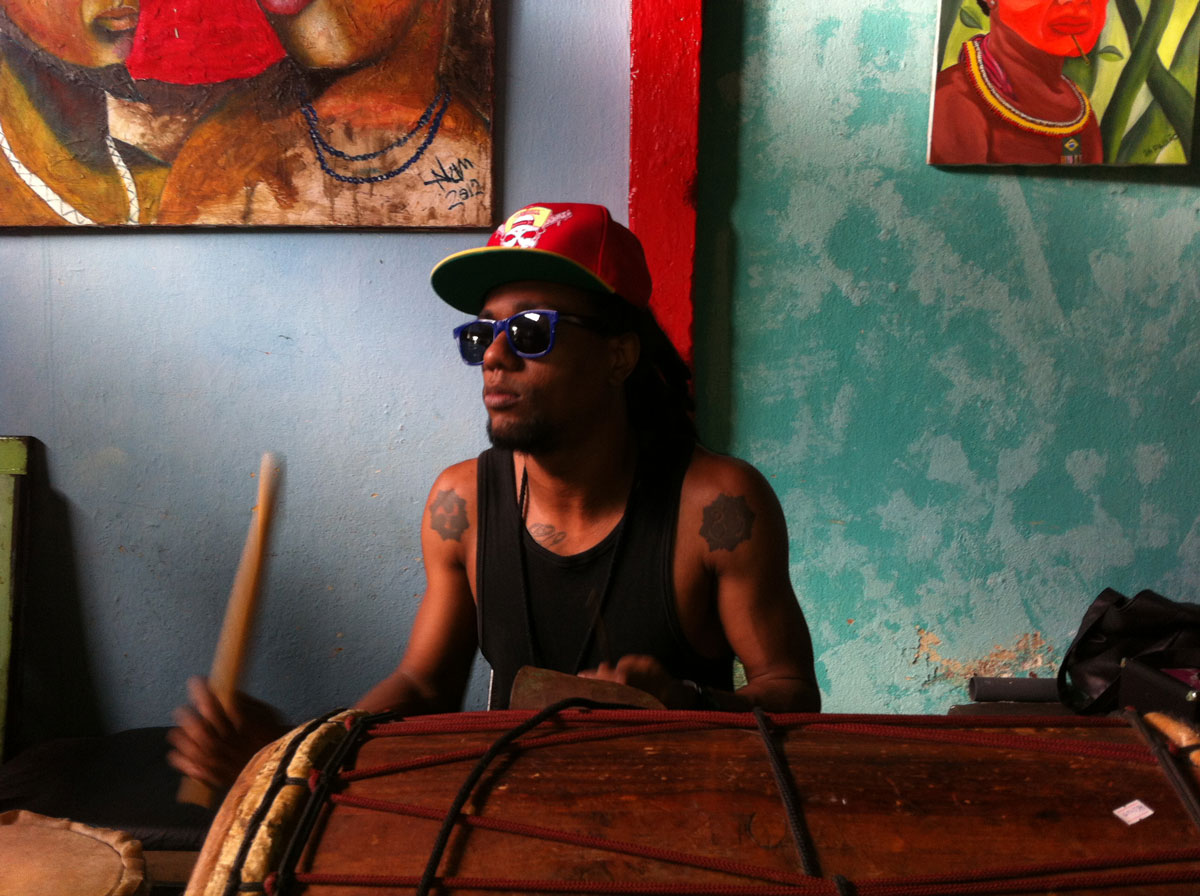As you walk towards the heart of the historic centre of Salvador, Polourinho, you see a pass about five music shops. The are attractively presented and inside you will find many instruments strongly associated with Bahia and brazil more generally: samba band drums and hand percussion, atabaques, cavaquinhos, acoustic guitars as well as bossa nova sheet music and CDs of many well established Brazilian musicians. Further on, in the cobbled streets of Polourinho, many tourist shops sell berimbaus, musical bows used in capoeira which are a powerful symbol of Afro-Brazilian culture. Their very particular sound can be heard often around this part of the city, as well as various percussion ensembles, often accompanied by chanting and singing that evokes African traditions. this part of town is the showpiece of the city, known for samba-reggae, capoeira and Afro-Brazilian dance. It has had huge public investment, both in restoring old buildings and for cultural production, particularly of the cultural forms mentioned, as well as museums and special events.
If you happen to wander down the narrower, less welcoming street behind those music shops you saw before you will find amuch greater number of shops dedicated toanother kind musical (re)production. These, much smaller shops sell PA systems, speakers in all shapes and sizes, cables, lights, car sound systems to fit in the car, in the boot on the roof. Continue reading →



